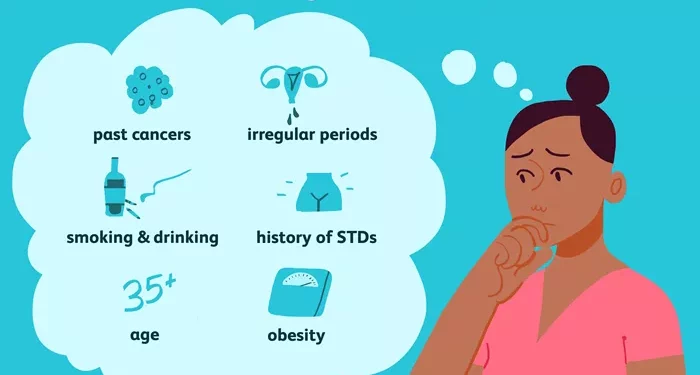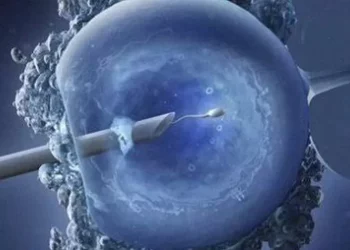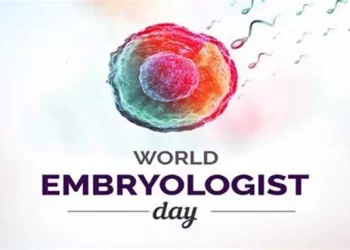Infertility is a significant medical and emotional issue that affects millions of couples worldwide. The World Health Organization defines infertility as the inability to conceive after one year of regular, unprotected intercourse. For women over 35, this period is reduced to six months. Infertility can be a distressing experience, often impacting mental health and relationships. Understanding the causes of infertility is crucial for effective diagnosis and treatment. This article delves into the top three causes of infertility: ovulatory disorders, tubal factor infertility, and male factor infertility.
Ovulatory Disorders
Ovulatory disorders are the leading cause of infertility in women. They account for about 25-30% of infertility cases. Ovulation is the process by which an egg is released from the ovary. Any disruption in this process can lead to difficulties in conception.
Polycystic Ovary Syndrome (PCOS)
PCOS is the most common ovulatory disorder. It affects approximately 10% of women of reproductive age. PCOS is characterized by hormonal imbalances that interfere with normal ovulation. Women with PCOS often have irregular menstrual cycles, which can lead to infrequent or absent ovulation.
Causes and Symptoms
The exact cause of PCOS is unknown. However, it is believed to involve a combination of genetic and environmental factors. Insulin resistance and elevated levels of androgens (male hormones) are common in women with PCOS. Symptoms include irregular periods, excessive hair growth, acne, and obesity.
Diagnosis and Treatment
Diagnosis of PCOS involves a combination of medical history, physical examination, blood tests, and ultrasound. Treatment focuses on managing symptoms and restoring normal ovulation. Lifestyle changes, such as weight loss and exercise, can improve symptoms. Medications like clomiphene citrate and letrozole are often used to induce ovulation. In some cases, insulin-sensitizing drugs such as metformin are prescribed.
Hypothalamic Dysfunction
The hypothalamus plays a crucial role in regulating the menstrual cycle by releasing gonadotropin-releasing hormone (GnRH). This hormone stimulates the pituitary gland to produce luteinizing hormone (LH) and follicle-stimulating hormone (FSH), which are essential for ovulation. Hypothalamic dysfunction can disrupt this process, leading to irregular or absent periods.
Causes and Symptoms
Common causes of hypothalamic dysfunction include excessive physical or emotional stress, significant weight loss or gain, and chronic illnesses. Women with this condition often experience irregular or absent periods and may have low body weight or a history of eating disorders.
Diagnosis and Treatment
Diagnosis involves blood tests to measure hormone levels and rule out other causes of menstrual irregularities. Treatment focuses on addressing the underlying cause. Reducing stress, achieving a healthy weight, and treating any chronic conditions can help restore normal menstrual function. In some cases, hormone therapy may be necessary.
Premature Ovarian Insufficiency (POI)
POI, also known as premature menopause, occurs when the ovaries stop functioning normally before the age of 40. This leads to reduced production of estrogen and irregular or absent ovulation.
Causes and Symptoms
The cause of POI is often unknown but can include genetic factors, autoimmune diseases, and certain medical treatments like chemotherapy. Symptoms are similar to those of menopause and include irregular periods, hot flashes, night sweats, and vaginal dryness.
Diagnosis and Treatment
Diagnosis involves blood tests to measure levels of FSH and estrogen. Treatment focuses on managing symptoms and may include hormone replacement therapy (HRT). Women with POI who wish to conceive may consider fertility treatments such as in vitro fertilization (IVF) with donor eggs.
Tubal Factor Infertility
Tubal factor infertility accounts for about 25-30% of infertility cases in women. It occurs when the fallopian tubes are blocked or damaged, preventing the sperm from reaching the egg or the fertilized egg from reaching the uterus.
Causes
The most common causes of tubal factor infertility include pelvic inflammatory disease (PID), endometriosis, and previous surgeries involving the pelvis or abdomen.
Pelvic Inflammatory Disease (PID)
PID is an infection of the female reproductive organs. It is often caused by sexually transmitted infections (STIs) such as chlamydia and gonorrhea. PID can cause scarring and blockage of the fallopian tubes.
Symptoms
Symptoms of PID can include pelvic pain, fever, abnormal vaginal discharge, and pain during intercourse or urination. However, some women may have no symptoms at all.
Diagnosis and Treatment
Diagnosis involves a combination of medical history, physical examination, and tests such as ultrasounds, blood tests, and laparoscopy. Treatment typically includes antibiotics to treat the infection. In severe cases, surgery may be required to remove damaged tissue.
Endometriosis
Endometriosis is a condition where tissue similar to the lining of the uterus grows outside the uterus. This can cause inflammation, scarring, and adhesions that can affect the fallopian tubes.
Symptoms
Common symptoms of endometriosis include pelvic pain, painful periods, pain during intercourse, and heavy menstrual bleeding. Some women may also experience infertility.
Diagnosis and Treatment
Diagnosis involves a combination of medical history, pelvic examination, imaging tests such as ultrasound or MRI, and laparoscopy. Treatment options include pain management with medications, hormone therapy to reduce or eliminate menstruation, and surgery to remove endometrial tissue. For women with infertility, assisted reproductive technologies (ART) such as IVF may be recommended.
Previous Surgeries
Surgeries involving the pelvis or abdomen, such as those for ectopic pregnancy, appendicitis, or fibroids, can lead to scarring and adhesions that block the fallopian tubes.
Symptoms
Symptoms depend on the underlying condition but may include pelvic pain, irregular menstrual cycles, and difficulty conceiving.
Diagnosis and Treatment
Diagnosis involves a combination of medical history, imaging tests, and sometimes laparoscopy. Treatment options include surgical procedures to remove adhesions and repair the fallopian tubes. In cases where surgery is not effective, ART such as IVF may be recommended.
Male Factor Infertility
Male factor infertility contributes to about 30-40% of all infertility cases. It involves issues with sperm production, function, or delivery.
Causes
The most common causes of male infertility include varicocele, infections, and hormonal imbalances.
Varicocele
A varicocele is an enlargement of the veins within the scrotum, similar to varicose veins in the legs. It is the most common reversible cause of male infertility.
Symptoms
Varicocele may cause pain, swelling, or a lump in the scrotum. However, many men with varicocele have no symptoms.
Diagnosis and Treatment
Diagnosis involves physical examination and scrotal ultrasound. Treatment options include surgical repair or embolization to close off the affected veins. Surgery can improve sperm quality and increase the chances of conception.
Infections
Infections of the reproductive tract, such as epididymitis, orchitis, or STIs, can affect sperm production and function. Chronic infections can lead to scarring and blockages.
Symptoms
Symptoms depend on the type of infection and may include pain, swelling, fever, and discharge. Some infections may have no symptoms.
Diagnosis and Treatment
Diagnosis involves medical history, physical examination, and tests such as semen analysis, urine tests, and ultrasounds. Treatment includes antibiotics to treat bacterial infections and other medications or procedures to manage symptoms and complications.
Hormonal Imbalances
Hormonal imbalances can affect sperm production and function. Common causes include issues with the hypothalamus, pituitary gland, or testicles.
Symptoms
Symptoms may include low libido, erectile dysfunction, fatigue, and changes in body hair or muscle mass.
Diagnosis and Treatment
Diagnosis involves blood tests to measure hormone levels and identify any underlying conditions. Treatment depends on the cause and may include hormone replacement therapy, medications to stimulate sperm production, or surgery to correct anatomical issues.
Conclusion
Infertility is a complex issue with multiple causes. Understanding the top three causes—ovulatory disorders, tubal factor infertility, and male factor infertility—can aid in accurate diagnosis and effective treatment. Each of these causes has specific symptoms, diagnostic methods, and treatment options. Early intervention and appropriate treatment can significantly improve the chances of conception and help couples achieve their dream of parenthood. If you suspect infertility, it is essential to seek medical advice to identify the underlying cause and explore the available treatment options.
Related Links:
6 reasons for male infertility
Unexplained Infertility: A Complete Overview
A Comprehensive Guide: Can Steroids Cause Female Infertility?



























